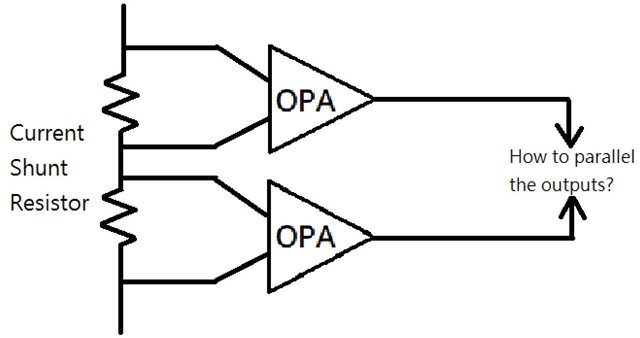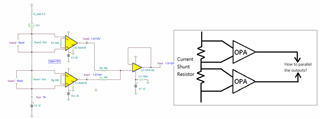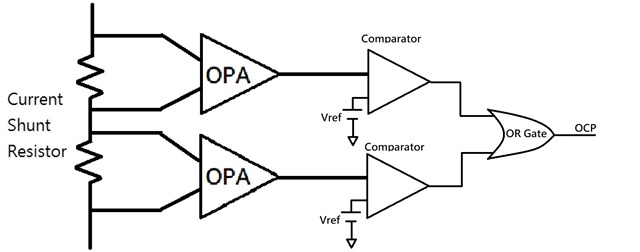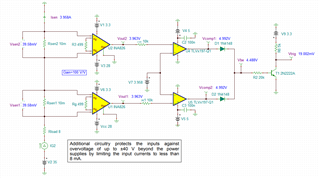Other Parts Discussed in Thread: INA826, TLV3502
Hi Team,
My cusotmer is surveying high accuracy current sensing solution for OCP(over-current protection) function, the OPA's output error needs to be < 2.4%(I think OPA2189 might be suitable), and this circuit has to deal with single fault conditon(when one OPA fails), so customer is wondering if paralleling the outputs of two OPA is applicable. Pls kindly help to suggest, thanks.





